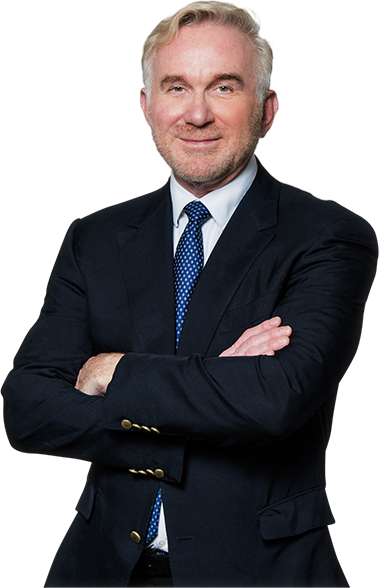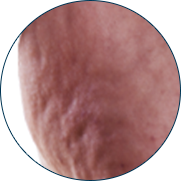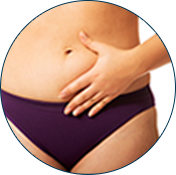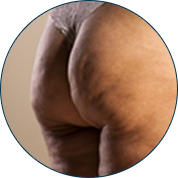Lipostructure®
from internationally recognized LipoStructure® specialist:
Dr. Sydney Coleman

As the inventor and pioneer of LipoStructure®, a revolutionary fat grafting technique, Dr. Sydney Coleman has corrected imperfections and transformed the bodies of numerous men and women. As traditional liposuction became popular in the ‘70s and ‘80s, people began to notice dents and irregularities in the treated areas, technically known as post-liposuction iatrogenic deformities.

Dr. Sydney Coleman
Dr. Coleman performs LipoStructure® using the patient’s own fat to effectively correct these deformities, indentations, or “dimpling” caused by prior liposuction surgeries.
Dr. Coleman was the first physician to observe and announce to the scientific community the regenerative ability of fat grafts and their associated stem cells. Liposuction deformities are often associated with retracted scarring, and placing fat into the scarred areas allows release of the adhesions and aids in preventing new scarring from occurring. Board certified by the American Board of Plastic Surgery (ABPS) and licensed to practice in the states of New York, Florida, and Pennsylvania, Dr. Coleman has dedicated more than three decades to providing superior body contouring results for his patients in New York City and the surrounding areas.
Schedule a ConsultationLiposuction Deformities
Are you a candidate for LipoStructure® to correct your liposuction deformities?
Superficial Surface Irregularities
Indentations, “dimpling,” and other superficial and deep irregularities can occur as a result of too much fat being removed or fat having been removed unevenly. Fat removal can also cause an exaggeration of preexisting irregularities or cellulite. The most common places we see lipodeformities are in the thighs, hips, arms, and abdomen of women and the back, chest, “love handles,” and abdomen of men. Fat grafting with LipoStructure® can:

- Fill depressions
- Smooth dimpling
- Level out dents
- Repair retracted scarring
- Recreate normal proportions
Unnatural or “Boxy” Proportions
When liposuction changes the relationship between the thighs, hips, and abdomen, unattractive body proportions can develop. This is especially problematic for women, as it can create a more masculine body shape. Liposuction of the “saddle bags” (lateral thighs) without appropriate reduction in the waist can result in a “boxy” silhouette, and flattening the lower abdomen without addressing the upper abdomen can contribute to unnatural proportions as well. Fat grafting with LipoStructure® can:

- Restore natural, attractive curves
- Re-establish a feminine shape between the waist, hips, and thighs
Discontinuous Contours Around the Butt
Liposuction of the back of the thighs and/or buttocks can result in an interruption of the natural flow of the thigh into the buttock. This can cause the buttock to sag and can also create unnatural or even “extra” buttock creases. Fat grafting with LipoStructure® can:

- Create a natural, streamlined transition from the buttocks to the thighs
- Fill in extra, unnatural creases
- Produce a more attractive, lifted appearance of the buttocks
Dr. Coleman performs LipoStructure®
using the patient’s own fat to effectively correct these deformities, indentations, or “dimpling” caused by prior liposuction surgeries.
Liposuction Deformity FAQs
-
What is Dr. Coleman’s experience with fat transfer?
Dr. Coleman first performed breast augmentation using fat transfer in 1995. Currently, he has performed over 100 fat transfer procedures, and many patients have maintained excellent results even at 10 years down the road. No other plastic surgeon has been performing fat transfer for breast augmentation as long as Dr. Coleman.
-
How much larger can I make my breasts with fat transfer?
Fat transfer is ideal for patients looking for a subtle increase in breast size. Generally, it is possible for the breasts to increase one cup size per procedure. For patients who desire a larger increase, multiple procedures are necessary.
-
How long does the fat transfer procedure take?
Since fat transfer requires a two-step technique, the procedure takes longer than traditional augmentation. To obtain ideal long-term results, Dr. Coleman must carefully harvest the fat, preserving as much tissue as possible. Fat tissue is then centrifuged to separate unwanted fluids and oils. The processed fat is then injected into the breasts in layers to provide the greatest access to a blood supply. The procedure takes an average of somewhere between three and five hours.
-
What is the recovery process after fat transfer?
Recovery is generally determined by how many areas were used for donor sites. The location of donor sites and the number of donor sites determines how long and painful the recovery process will be. Sites that fat was harvested from will be swollen, bruised, and uncomfortable for at least the first week. The breasts may experience slight bruising and swelling, but in most cases there is little to no breast pain. You may feel sore for up to two weeks after your surgery. Most patients return to work a week or so after surgery. The majority of the bruising and swelling should subside after three weeks, but minor swelling may remain for up to six months after surgery.
-
How much is the average tissue survival rate?
Fat tissue is easily damaged, and that’s why the delicate Coleman LipoStructure® technique is used for breast augmentation. Dr. Coleman’s technique ensures that the fat is injected in a way that gives it the most access to the blood supply. Dr. Coleman’s LipoStructure® is renowned for having the highest survival rate of transplanted fat. In fact, recent studies at NYU suggest that the Coleman technique yields a survival rate of up to 85 percent.
-
Will fat transfer cause complications with future breast cancer detection?
It is possible that calcifications and lumps can occur after fat transfer (as it can after any breast surgery), but there is no evidence to suggest that fat transfer will cause breast cancer or prevent its detection. The American Society of Plastic Surgery (ASPS) has determined that fat grafting to the breast is safe and that there is no higher incidence of breast cancer among those who have had fat grafting. They do recommend, however, that the surgeon performing fat grafting to the breasts should be someone with a good deal of experience doing this procedure.
Dr. Sydney Coleman for his acclaimed LipoStructure® procedure. To learn more about fat grafting with LipoStructure® or to schedule your consultation, please fill out the contact form below.